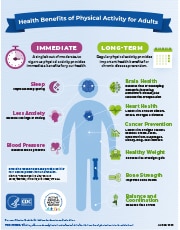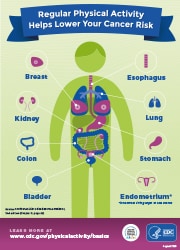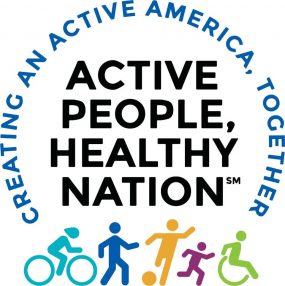Benefits of Physical Activity
Regular physical activity is one of the most important things you can do for your health. Being physically active can improve your brain health, help manage weight, reduce the risk of disease, strengthen bones and muscles, and improve your ability to do everyday activities.
Adults who sit less and do any amount of moderate-to-vigorous physical activity gain some health benefits. Only a few lifestyle choices have as large an impact on your health as physical activity.
Everyone can experience the health benefits of physical activity – age, abilities, ethnicity, shape, or size do not matter.
Immediate Benefits
Some benefits of physical activity on brain health [PDF-14.4MB] happen right after a session of moderate-to-vigorous physical activity. Benefits include improved thinking or cognition for children 6 to 13 years of age and reduced short-term feelings of anxiety for adults. Regular physical activity can help keep your thinking, learning, and judgment skills sharp as you age. It can also reduce your risk of depression and anxiety and help you sleep better.
Both eating patterns and physical activity routines play a critical role in weight management. You gain weight when you consume more calories through eating and drinking than the amount of calories you burn, including those burned during physical activity.
To maintain your weight: Work your way up to 150 minutes a week of moderate physical activity, which could include dancing or yard work. You could achieve the goal of 150 minutes a week with 30 minutes a day, 5 days a week.
People vary greatly in how much physical activity they need for weight management. You may need to be more active than others to reach or maintain a healthy weight.
To lose weight and keep it off: You will need a high amount of physical activity unless you also adjust your eating patterns and reduce the amount of calories you’re eating and drinking. Getting to and staying at a healthy weight requires both regular physical activity and healthy eating.
See more information about:
- Getting started with weight loss.
- Getting started with physical activity.
- Improving your eating patterns.
Learn more about the health benefits of physical activity for children, adults, and adults age 65 and older.
See these tips on getting started.
Reduce Your Health Risk
The good news [PDF-14.5MB] is that moderate physical activity, such as brisk walking, is generally safe for most people.
Cardiovascular Disease
Heart disease and stroke are two leading causes of death in the United States. Getting at least 150 minutes a week of moderate physical activity can put you at a lower risk for these diseases. You can reduce your risk even further with more physical activity. Regular physical activity can also lower your blood pressure and improve your cholesterol levels.
Type 2 Diabetes and Metabolic Syndrome
Regular physical activity can reduce your risk of developing type 2 diabetes and metabolic syndrome. Metabolic syndrome is some combination of too much fat around the waist, high blood pressure, low high-density lipoproteins (HDL) cholesterol, high triglycerides, or high blood sugar. People start to see benefits at levels from physical activity even without meeting the recommendations for 150 minutes a week of moderate physical activity. Additional amounts of physical activity seem to lower risk even more.
Infectious Diseases
Physical activity may help reduce the risk of serious outcomes from infectious diseases, including COVID-19, the flu, and pneumonia. For example:
- People who do little or no physical activity are more likely to get very sick from COVID-19 than those who are physically active. A CDC systematic review [PDF-931KB] found that physical activity is associated with a decrease in COVID-19 hospitalizations and deaths, while inactivity increases that risk.
- People who are more active may be less likely to die from flu or pneumonia. A CDC study found that adults who meet the aerobic and muscle-strengthening physical activity guidelines are about half as likely to die from flu and pneumonia as adults who meet neither guideline.
Some Cancers
Being physically active lowers your risk for developing several common cancers. Adults who participate in greater amounts of physical activity have reduced risks of developing cancers of the:
- Bladder
- Breast
- Colon (proximal and distal)
- Endometrium
- Esophagus (adenocarcinoma)
- Kidney
- Lung
- Stomach (cardia and non-cardia adenocarcinoma)
If you are a cancer survivor, getting regular physical activity not only helps give you a better quality of life, but also improves your physical fitness.
Strengthen Your Bones and Muscles
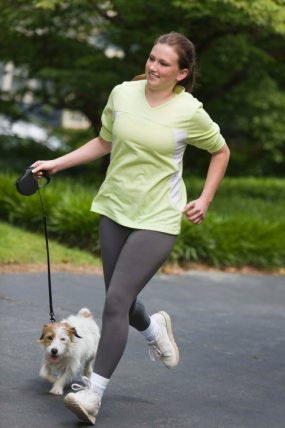
As you age, it’s important to protect your bones, joints, and muscles – they support your body and help you move. Keeping bones, joints, and muscles healthy can help ensure that you’re able to do your daily activities and be physically active.
Muscle-strengthening activities like lifting weights can help you increase or maintain your muscle mass and strength. This is important for older adults who experience reduced muscle mass and muscle strength with aging. Slowly increasing the amount of weight and number of repetitions you do as part of muscle strengthening activities will give you even more benefits, no matter your age.
Improve Your Ability to do Daily Activities and Prevent Falls
Everyday activities include climbing stairs, grocery shopping, or playing with your grandchildren. Being unable to do everyday activities is called a functional limitation. Physically active middle-aged or older adults have a lower risk of functional limitations than people who are inactive.
For older adults, doing a variety of physical activity improves physical function and decreases the risk of falls or injury from a fall. Include physical activities such as aerobic, muscle strengthening, and balance training. Multicomponent physical activity can be done at home or in a community setting as part of a structured program.
Hip fracture is a serious health condition that can result from a fall. Breaking a hip have life-changing negative effects, especially if you’re an older adult. Physically active people have a lower risk of hip fracture than inactive people.
Increase Your Chances of Living Longer
See physical activity recommendations for different groups, including:
An estimated 110,000 deaths per year could be prevented if US adults ages 40 and older increased their moderate-to-vigorous physical activity by a small amount. Even 10 minutes more a day would make a difference.
Taking more steps a day also helps lower the risk of premature death from all causes. For adults younger than 60, the risk of premature death leveled off at about 8,000 to 10,000 steps per day. For adults 60 and older, the risk of premature death leveled off at about 6,000 to 8,000 steps per day.
Manage Chronic Health Conditions & Disabilities
Regular physical activity can help people manage existing chronic conditions and disabilities. For example, regular physical activity can:
- Reduce pain and improve function, mood, and quality of life for adults with arthritis.
- Help control blood sugar levels and lower risk of heart disease and nerve damage for people with type 2 diabetes.
- Help support daily living activities and independence for people with disabilities. Also see:
Active People, Healthy NationSM is a CDC initiative to help people be more physically active.
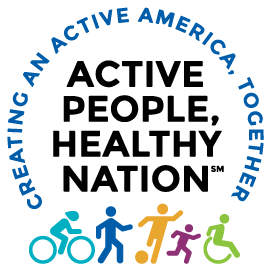
Sign up today!
